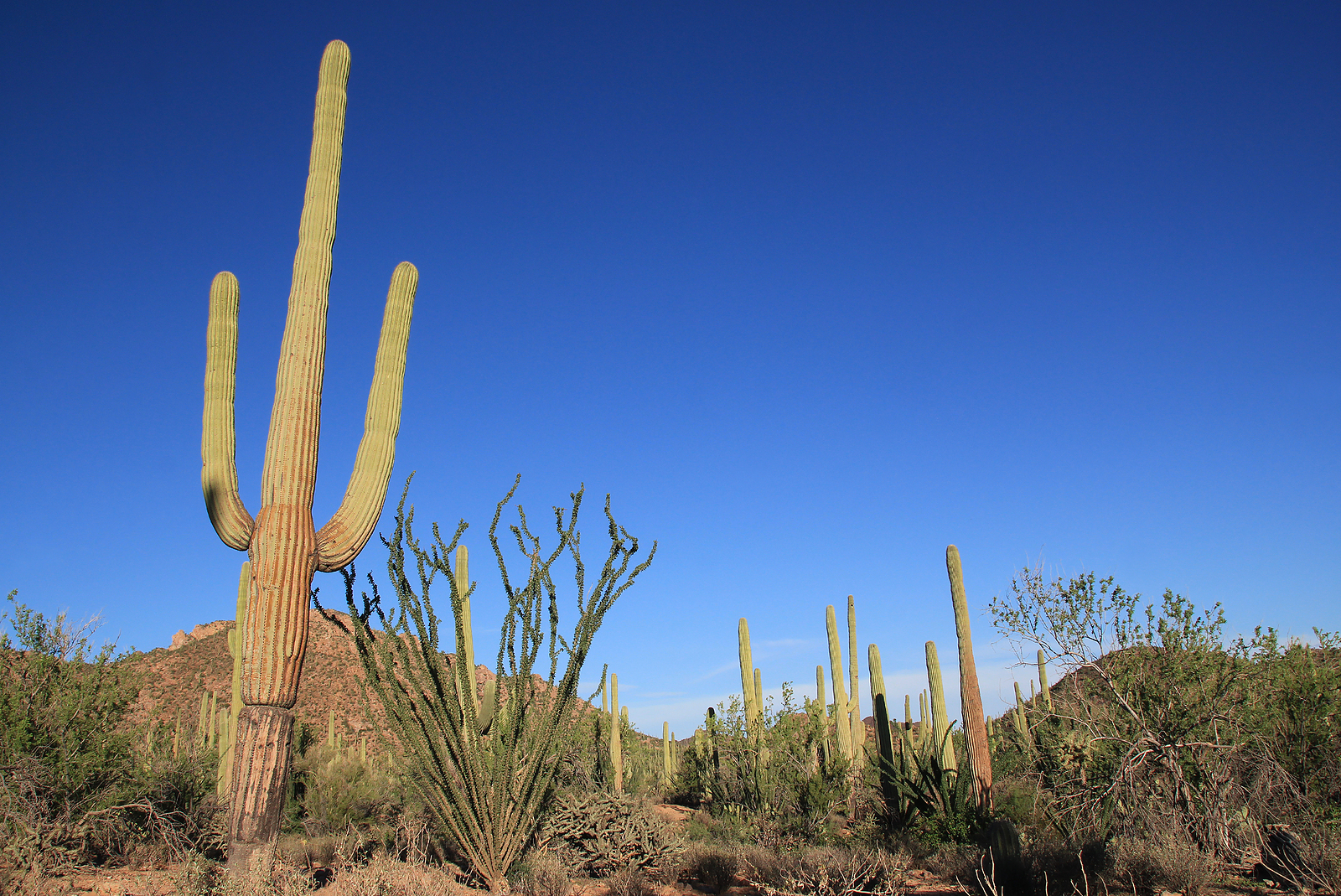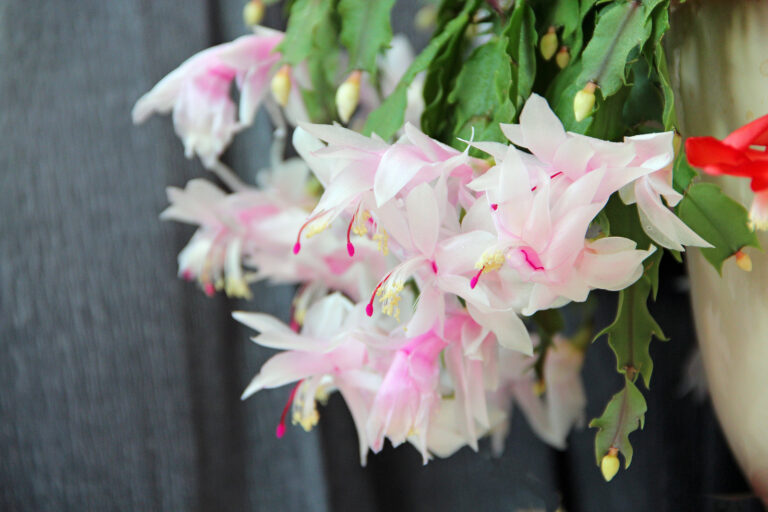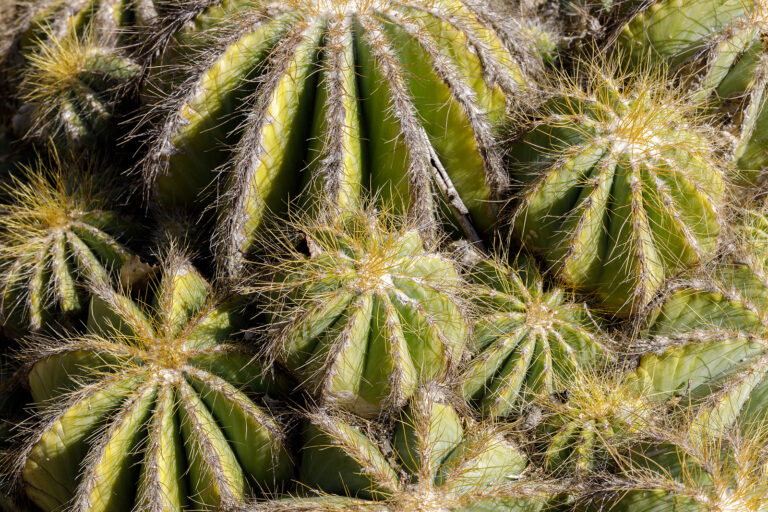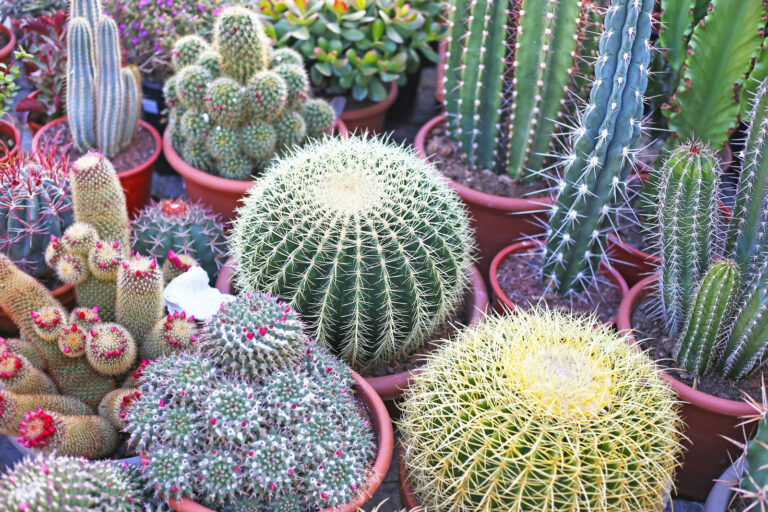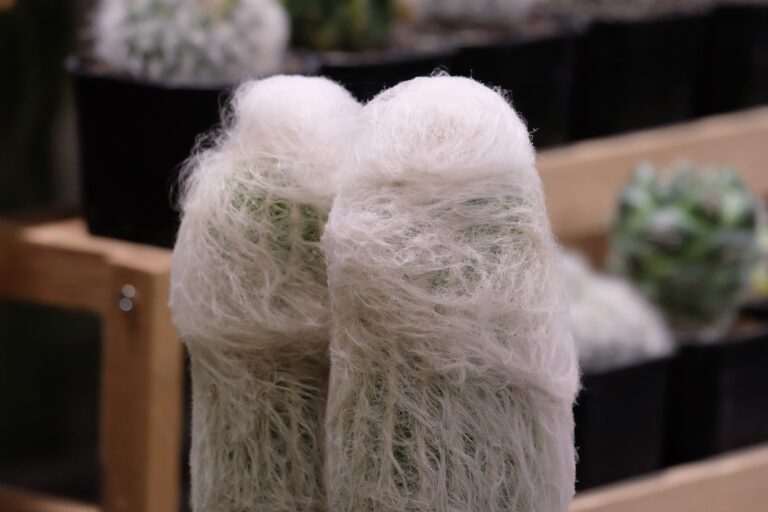How to Grow Carnegiea – Saguaro Cactus
Carnegiea is a genus of one species, the giant Saguaro cactus. The Saguaro is columnar with fluted ribs on stout branches that curve upward giving the appearance of raised hands. The spines are light brown.
Mature Saguaro cactus that are decades old can produce greenish-white, night-blooming flowers that are fragrant. Saguaro flower only in old age. Flowers appear in late spring and early summer. Flowers are followed by oval, edible fruits that split open to reveal red pulp.
Saguaros are so slow-growing (about 3 feets/1m in 30 years) that they can remain in containers for many years. In the landscape, mature Saguaros make a dramatic background for outdoor plantings.
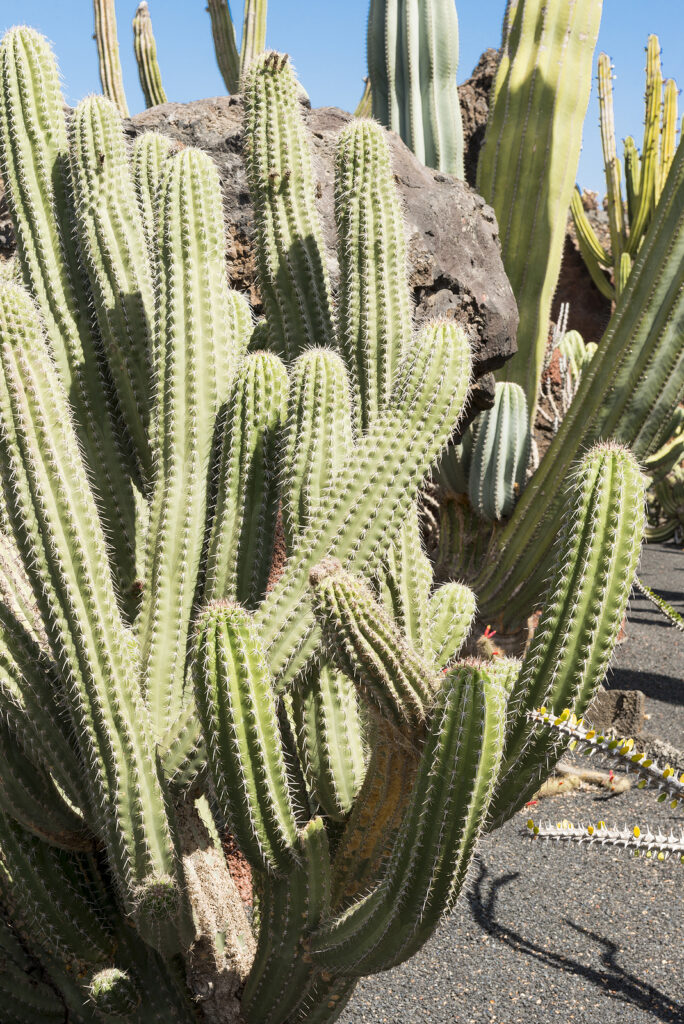
Get to know Carnegia
- Plant type: Cereeae cactus; candelabara cactus
- Hardiness temperature: 25℉ (-3.9℃)
- Shape and size: Grow to 50 feet (15m) tall; columnlike stems branch out into 6- to 10-foot-tall (2-3m) candelabra-shaped branches; branches can have a diatmeter of 12 to 26 inches (30-65cm); branches grow vertically and have 12 to 24 ribs; brwon areoles are densely coverd with yellowish spines of to 3 inches (7cm) long
- Flowers: “bat blossoms” sit atop the crown; flowers remain open day and night
- Bloom time: Spring, summer
- Fruit: Oval fruit 3.5 inches (9cm) long and are edible; fruit spits open to reveal red pulp
- Common name: Saguaro cactus, giant Saguaro cactus
- Genus name: Carnegia gigantea
- Family name: Cactaceae
- Origin: Arizona to Sonora, Mexico
Carnegia planting
- Carnegia can be grown outdoors in the garden or in a pot where temperatures do not fall below 25℉ (-3.9℃) in winter.
- Carnegia can be grown indoors in a bright sunny windor or in a greenhouse where the light is bright.
- Light: Grow in a light, sunny, and warm spot; indoors Carnegia requires more light than other houseplants.
- Soil: Porous soil rich with nutrients and slightly acidic.
How to water and feed Carnegia
- Water: Light water; keep plants dry in winter.
- Feeding: Fertilize Carnegia with a cactus fertilizer during summer growth time.
Carnegia care
- Growing Carnegia can be difficult. It grows very slowly, about 3 feet (1m) in 30 years.
- Propagate Carnegiea by seed.
Carnegia species to grow
- Carnegiea gigantea (Saguaro). Among the largest, slowest-growing cacti known. Mature specimens may take a century or more to reach their treelike stature. Found in southwest Arizona and parts of sonora, Mexico. See description above.

